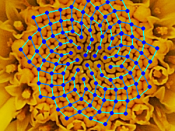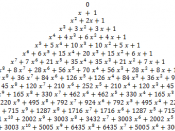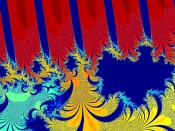Leonardo da Pisa, known to us as Leonardo Fibonacci, was born in Pisa in 1175. The nickname "Fibonacci" came from "Filius Bonacci" (son of Bonacci). Fibonacci also sometimes used the name Bigollo, which means good-for-nothing or a traveler. Fibonacci was educated in mathematics by Arab masters while his father, Guilielmo Bonacci, held a diplomatic post in northern Africa. His father's job was to represent the merchants of the Republic of Pisa since it was in a trading business with Bugia, later called Bougie, and now called Bejaia.
About 1200 Leonardo returned to Pisa and used the knowledge he had acquired to write a book called "Liber abaci" ("Book of the Abacus"). The book introduced Europeans to Arabic numeral (which we still use today) and the decimal system. Prior to this, Europeans used Roman numerals. The first section of this book was based on the arithmetic and algebra that Fibonacci learned during his travels.
The second section of this book contains many problems aimed at merchants; they relate to the price of goods, how to calculate profit on transactions, how to convert between the various currencies in use in Mediterranean countries, and problems which had originated in China.
The mathematical problem that inspired Fibonacci to write about the number sequence in Liber abaci was the rabbit problem. According to The Golden Ratio and Fibonacci Numbers by Richard A. Dunlap on page 35, the rabbit breeding problem is as follows:
A pair of adult rabbits produces a pair of baby rabbits once each month. Each pair of baby rabbits requires one month to grow to be adults and subsequently produces one pair of baby rabbits each month thereafter. Determine the number of pairs of adult and baby rabbits after some number of months. It is also assumed that rabbits...


